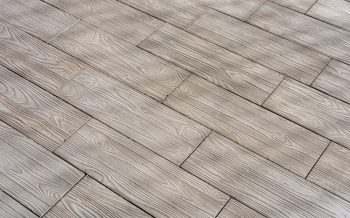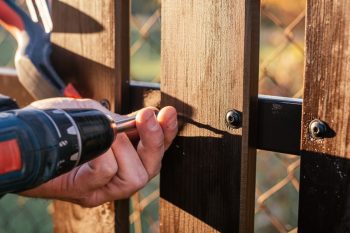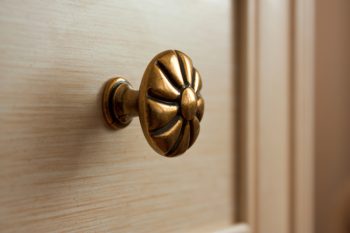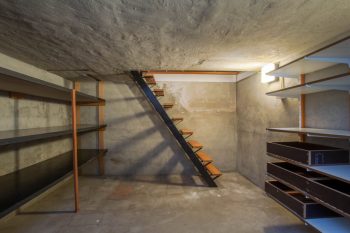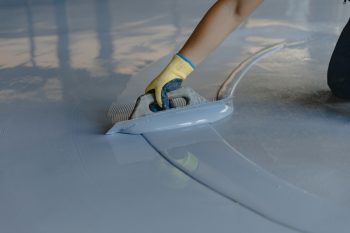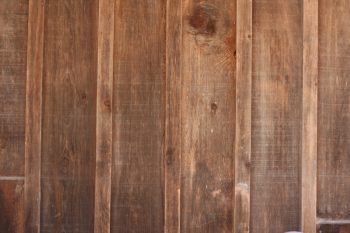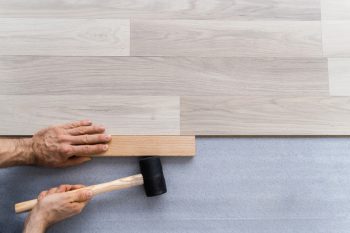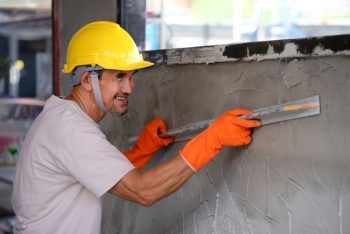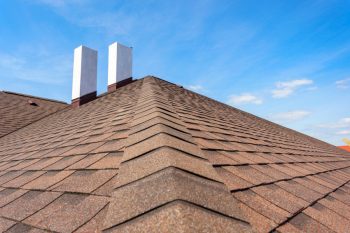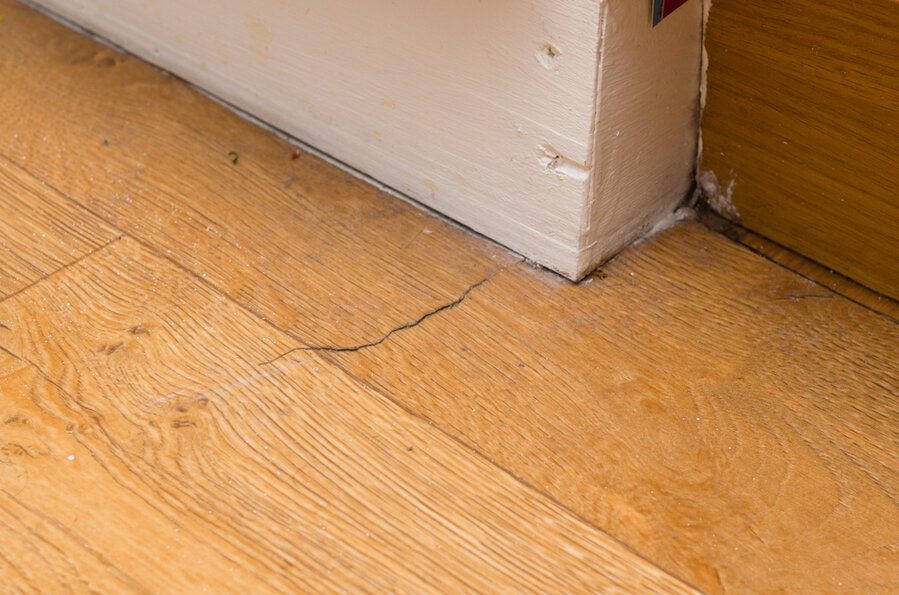
Water is one of your worst emesis if you have vinyl flooring. No matter how careful you are, any minor accident can damage your vinyl flooring.
So, learning how to fix it can be a valuable skill for homeowners.
To fix water-damaged vinyl flooring:
- Use the vacuum cleaner blower function.
- Run a dehumidifier for a few days.
- Increase the room temperature.
We understand how the water damage on your vinyl flooring can be a big concern for you, as changing it would be super expensive. This is why we have written this guide, to help you fix this issue yourself and with little to no spending!
Fixing Water Damaged Vinyl Flooring
Vinyl flooring is used in many homes to replace hardwood floors and porcelain and is relatively easier to maintain.
Even though it doesn’t absorb high power, leaving water spilled on vinyl flooring can cause significant damage.
The easiest way to know if moisture has accumulated beneath the vinyl planks on your floor is to look out for molds, swelling, dampness, raised edges, and the shifting of the planks.
If you’ve spotted any of these signs, it’s time to act quickly.
Mold can develop wherever where there is enough moisture in the air. For people with allergies or respiratory issues, this can be toxic.
There are a few ways you can rectify the vinyl floor damage caused by water:
1. Using a Vacuum Cleaner
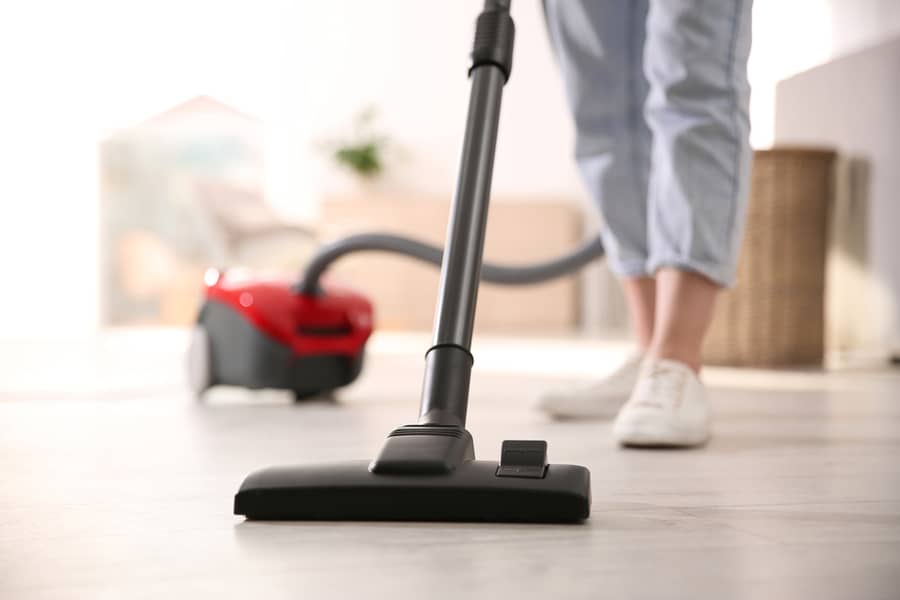
Modern vacuum cleaners are equipped to clean dry and wet messes.
So if water is accumulated on your vinyl flooring, dry it with the “blower” function of the vacuum cleaner.
It is necessary to exercise precaution when using the vacuum cleaner, as direct contact with the wires with water could end up causing a short circuit.
This will not affect the standing water but minimize the damage caused by planks. Once dry enough, you can check if the vinyl planks are damaged to the point of needing to be replaced.
2. Using a Dehumidifier
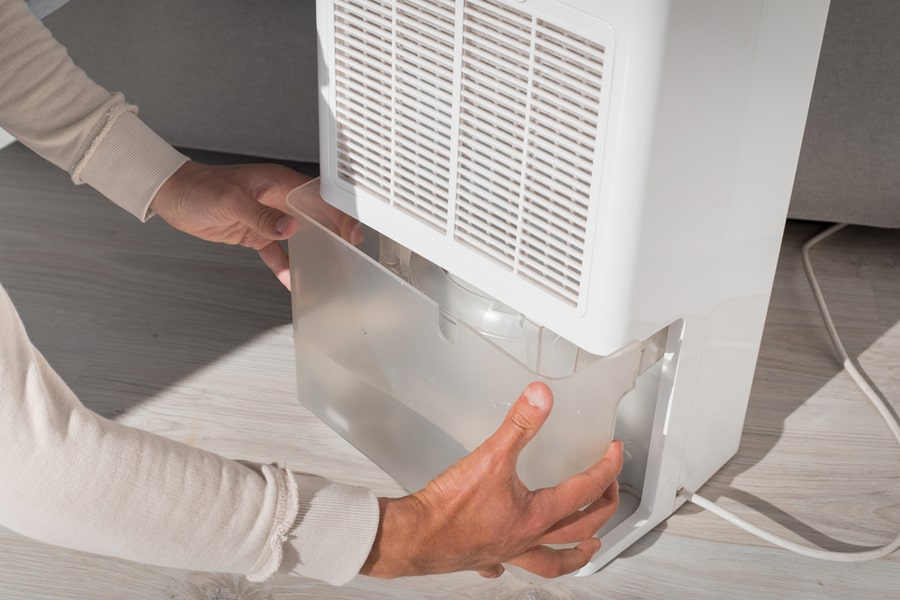
Another way you can dry the vinyl flooring in your house is by running a dehumidifier until the moisture is mostly gone.
A medium to large dehumidifier for a regular-sized room will minimize the water damage caused to your vinyl flooring.
3. Increasing the Room Temperature
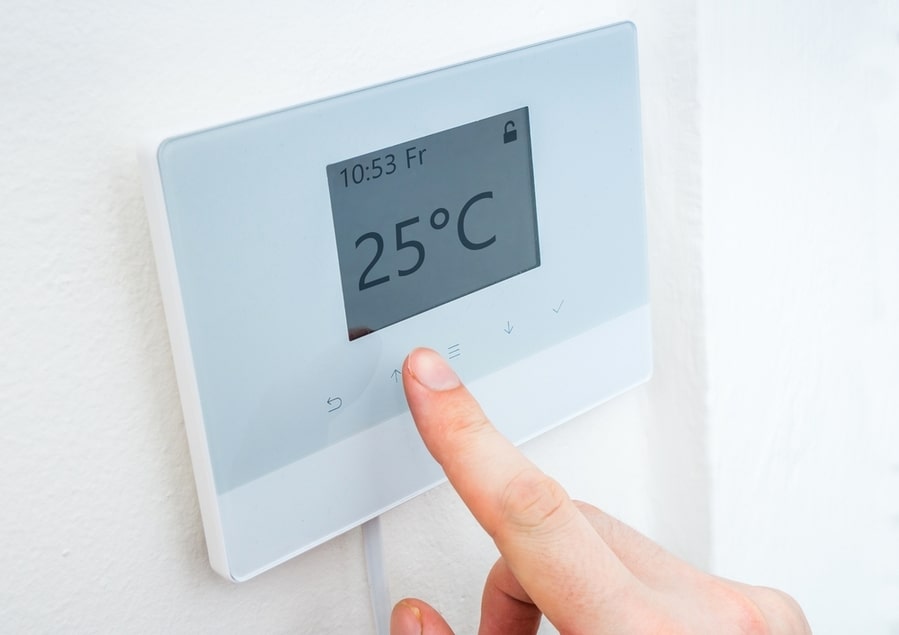
If you’ve seen any water damage in your vinyl flooring, you first should increase the heater temperature for a few days.
As the room temperature increases for extended periods, the water from under the planks will be dried, restoring the vinyl flooring to its previous condition.
How To Replace or Repair Water-Damaged Vinyl Flooring
If the water damage on your vinyl flooring isn’t getting fixed by drying it out, you need to repair or replace it.
Most of the time, mending the affected area is enough, but if the damage has spread too far, you may need to replace the entire flooring section.
1. Repairing Damaged Area
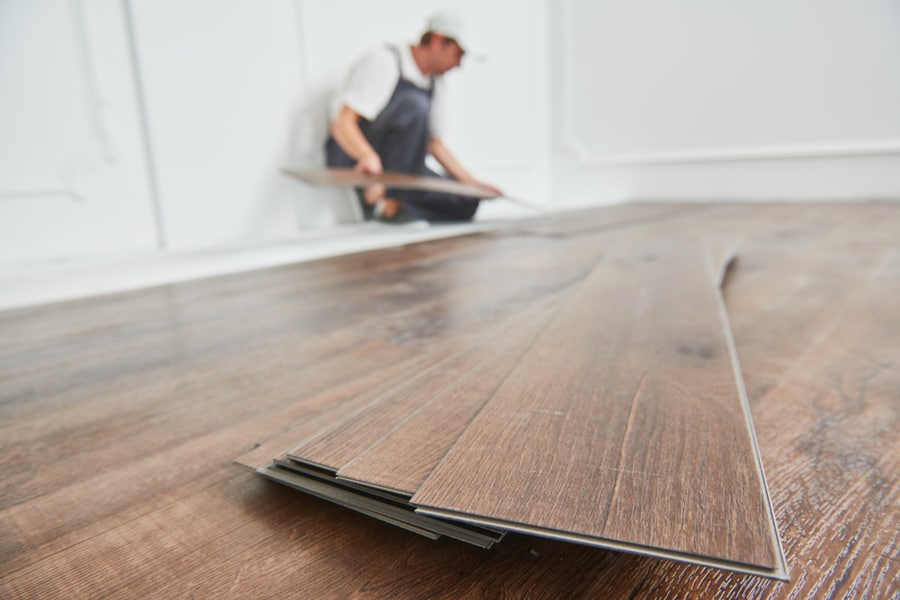
If you’ve noticed that a specific area on your vinyl flooring has started buckling due to water damage, repair it instead of replacing it.
Start by peeling the vinyl tile that has been damaged. Soften the stuck adhesive using a hairdryer and scrape it away.
Next, apply a new adhesive to the area, placing the vinyl tile back into place. Smooth any air bubbles and ensure the tile is correctly stuck by putting weights on top for a little while.
2. Replacing Vinyl Flooring
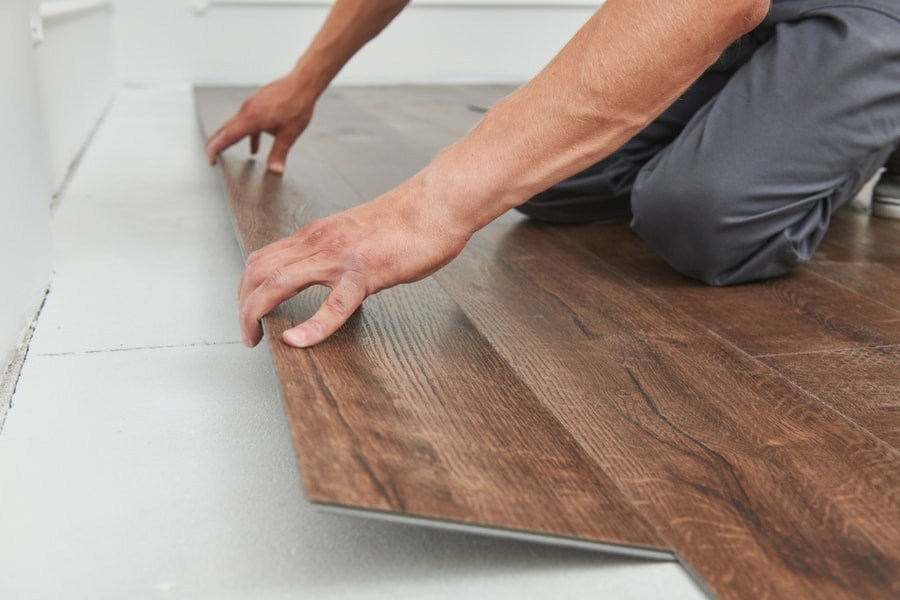
To replace the water-damaged vinyl flooring, peel away the old tiles and scrape the glue, as explained in the method above. Now, use the old vinyl tires as a guideline to cut the shape onto the new ones.
Now apply the adhesive over the whole area and use a rubber mallet to press the new tiles into place.
Conclusion
To wrap it up, we have shared with you three practical ways to fix the water-damaged vinyl flooring by drying it out using different methods.
We have also talked about various signs that can indicate your vinyl flooring has been affected by water.
Additionally, we discussed repairing and replacing the vinyl flooring if the water damage is severe.
We hope this article has assisted you in finding a solution to this predicament without costing you a lot of money.
Frequently Asked Questions
How Often Should Vinyl Flooring Be Replaced?
If the vinyl flooring is installed properly with good-quality tiles, it can last about 20-25 years. However, if not cared for or correctly installed, you may have to replace it in the next 10 years or less.
How Do You Clean a 20-Year-Old Vinyl Floor?
To clean old vinyl flooring, cover the floor with baking soda. Next, pour a mixture of vinegar, dish soap, and water over the floor.
Clean the floor using a microfiber mop and baking soda as a mild scouring agent. Lastly, wash the floor with water until there is no soap or baking soda sign.
